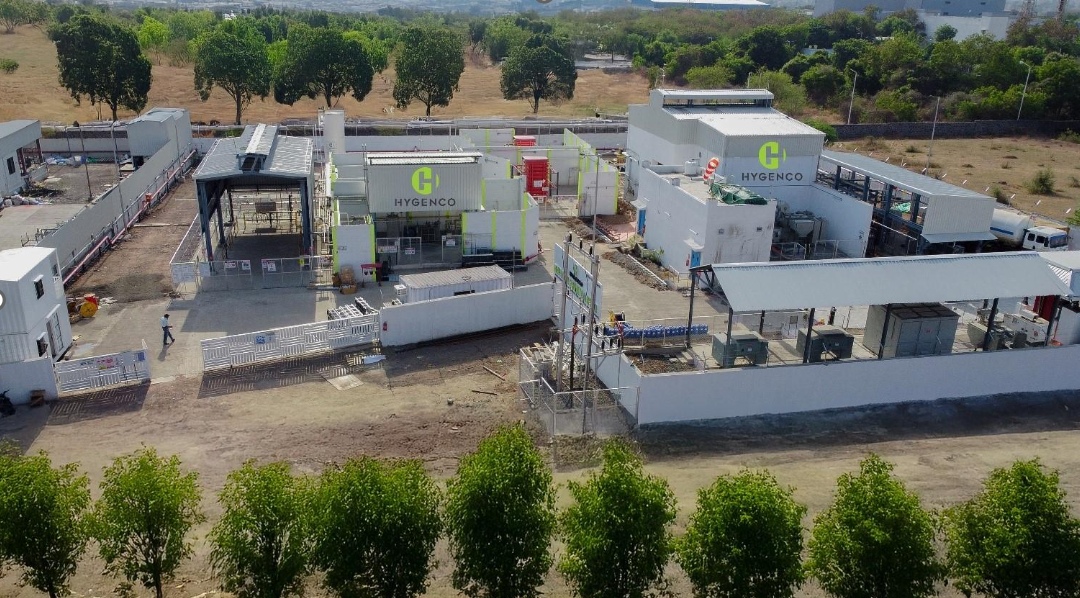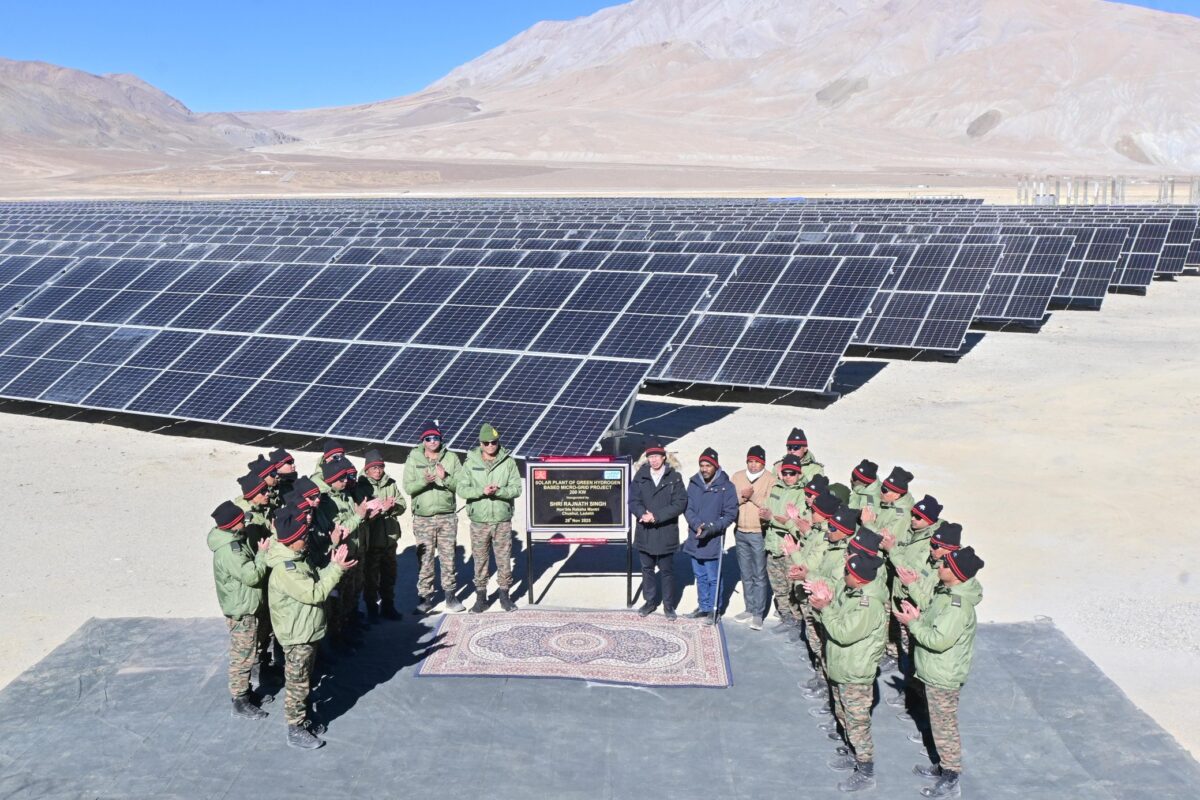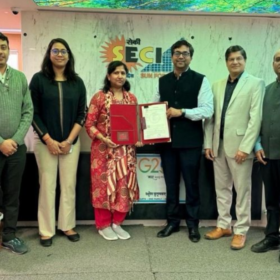Hygenco Green Energies has commissioned Maharashtra’s first green hydrogen and green oxygen production facility in Chhatrapati Sambhaji Nagar. This project will supply green hydrogen and oxygen to optic fibre manufacturer Sterlite Technologies Ltd.’s glass preform facility, supporting its goal to achieve Net Zero by 2030.
This facility, “Project Photon Leap” marks Hygenco’s third operational green hydrogen plant, following the commissioning of Project Heartland at Ujjain, Madhya Pradesh in 2022, and Project Steel One at Hisar, Haryana in 2024.
The newly inaugurated plant will enable Sterlite Technologies Ltd (STL) to become the world’s first optical fibre manufacturer to deploy 100% green hydrogen in its production processes. Hygenco’s scope includes build, own, and operate the facility for commercially viable supply under a long-term offtake agreement with Sterlite. The facility features advanced autonomous energy management systems, real-time monitoring, and automated control technologies, enhancing safety and operational efficiency.
Amit Bansal, CEO, Hygenco Green Energies Pvt. Ltd, said, “Green Hydrogen has the potential to be a game-changer in India’s journey towards sustainability. Our partnership with STL represents a bold step forward in decarbonizing industrial processes. We are proud to enable STL to lead the global optical fibre industry into a new era of green manufacturing.”
“By leveraging 100% green hydrogen for its glass preform manufacturing, STL is setting a new global benchmark for decarbonization in the optical fibre industry. Our partnership with Hygenco exemplifies our commitment towards sustainability and operational excellence,”said Rahul Puri, CEO – Optical Networking Business, STL.
Headquartered in Gurgaon, India, Hygenco develops and deploys scaled up commercially attractive green hydrogen and green ammonia assets. It plans to invest $2.5 billion over three years to set up green hydrogen projects in India. The company aims to deploy 10 GW of green hydrogen and ammonia assets by 2030, aligning with India’s net-zero ambitions.
Thyssenkrupp Nucera said sales of its electrolysis technologies fell more than 20% in the third quarter of fiscal year 2024-25. Alkaline water electrolysis (AWE) dropped 23% to €103 million ($119.6 million), while the Chlor-Alkali (CA) segment declined 21% to €81 million. Based on preliminary, unaudited figures, the electrolysis specialist said it expects consolidated earnings before interest and taxes (EBIT) of EUR 0 million for the third quarter of the current 2024-25 fiscal year.
Plug Power has signed a multi-year supply agreement with an unnamed US-based industrial gas firm. “The agreement extends the companies’ current strategic relationship through 2030, securing reliable hydrogen supply for Plug’s growing applications business,” said New York-based Plug Power. It claimed that it has deployed more than 72,000 fuel cell systems and 275 fueling stations. Its hydrogen production plants are operational in Georgia, Tennessee, and Louisiana.
Pennsylvania Governor Josh Shapiro said Verne will open its first manufacturing facility in the state. The California-based energy storage firm will invest $4.5 million in the project and receive $1.27 million in public funding. Verne has developed a process to increase hydrogen density by storing it in a cold and compressed state. “Scaling up to commercial operations, the company will manufacture hydrogen storage vessels at its new facility in the Marcellus Energy Park in Muncy,” said Shapiro’s office.
The New York State Energy Research and Development Authority (Nyserda) has allocated $3.9 million to support development of maritime solutions for clean hydrogen transport within the state. “This funding advances new and retrofitted vessels as another option to deliver and distribute clean hydrogen,” said Nyserda. It noted the funding may help overcome logistical and economic challenges associated with land-based transport. Projects require a minimum 50% cost share from non-Nyserda sources.
The European Commission has introduced a greenhouse gas emission methodology for low-carbon hydrogen and fuels. “This methodology complements the existing ones on renewable hydrogen and renewable fuels of non-biological origin (RFNBOs), completing the EU’s regulatory framework for hydrogen,” said the European executive body . To qualify as low carbon, hydrogen and related fuels must achieve at least 70% greenhouse gas emission savings compared with unabated fossil fuels, said the commission.
Sineng Electric has signed a strategic cooperation agreement with Shuangliang Group to promote integrated development across the “solar + storage + hydrogen value chain.” The two Chinese companies will jointly develop demonstration projects. “The scope of cooperation includes joint R&D on technology and equipment, development of zero-carbon park projects, operation and maintenance services, and international market expansion,” said Sineng.
This content is protected by copyright and may not be reused. If you want to cooperate with us and would like to reuse some of our content, please contact: editors@pv-magazine.com.









By submitting this form you agree to pv magazine using your data for the purposes of publishing your comment.
Your personal data will only be disclosed or otherwise transmitted to third parties for the purposes of spam filtering or if this is necessary for technical maintenance of the website. Any other transfer to third parties will not take place unless this is justified on the basis of applicable data protection regulations or if pv magazine is legally obliged to do so.
You may revoke this consent at any time with effect for the future, in which case your personal data will be deleted immediately. Otherwise, your data will be deleted if pv magazine has processed your request or the purpose of data storage is fulfilled.
Further information on data privacy can be found in our Data Protection Policy.